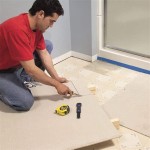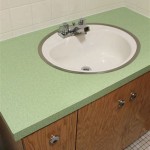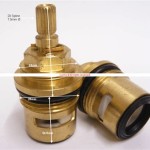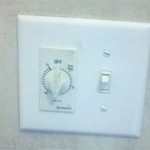How To Replace Loose Bathroom Tiles
A loose tile in your bathroom can be a hazard, causing slips and falls. It can also be unsightly, detracting from the overall look of your bathroom. If you have a loose tile, it's important to replace it as soon as possible. Here's a step-by-step guide on how to replace a loose bathroom tile:
Step 1: Gather Your Tools and Materials
Before you start, make sure you have the following tools and materials:
- Replacement tile that matches the existing tiles
- Grout
- Grout sealer
- Thin-set mortar
- Notched trowel
- Rubber grout float
- Bucket
- Sponge
- Safety glasses
- Gloves
Step 2: Remove the Loose Tile
Start by removing the loose tile. Carefully pry it up with a flat-head screwdriver, being careful not to damage the surrounding tiles. Once the tile is removed, you'll need to remove the old grout from the area where the tile was located.
Step 3: Prepare the Subfloor
Once the old grout is removed, you'll need to prepare the subfloor for the new tile. Make sure the area is clean and dry. If the subfloor is uneven, you may need to level it out with a thin layer of self-leveling compound.
Step 4: Apply Thin-Set Mortar
Once the subfloor is prepared, you can apply thin-set mortar. Use a notched trowel to spread the mortar over the area where the new tile will be located. Make sure to apply the mortar evenly and in a thin layer.
Step 5: Set the New Tile
Carefully set the new tile in place over the thin-set mortar. Press the tile firmly into place, making sure that it is level with the surrounding tiles. Use a rubber mallet if necessary to tap the tile into place.
Step 6: Allow the Mortar to Dry
Allow the thin-set mortar to dry completely before moving on to the next step. The drying time will vary depending on the type of thin-set mortar you used. Check the manufacturer's instructions for specific drying times.
Step 7: Apply Grout
Once the thin-set mortar is dry, you can apply grout to the joints between the tiles. Use a rubber grout float to spread the grout evenly. Make sure to press the grout firmly into the joints.
Step 8: Clean the Tiles
Once the grout is applied, you'll need to clean the tiles. Use a damp sponge to wipe away any excess grout. Be careful not to scrub the tiles too hard, as this could damage the grout.
Step 9: Apply Grout Sealer
Once the tiles are clean, you can apply a grout sealer. Grout sealer helps to protect the grout from stains and mildew. Apply the sealer according to the manufacturer's instructions.
Step 10: Enjoy Your New Tile
Once the grout sealer is dry, you can enjoy your new tile. The tile should now be securely in place and looking its best.

How To Repair Tile Falls Off Shower Wall Ceramic D I Y
.png?strip=all)
How To Fix Loose Or Broken Ceramic Floor Tiles

Repair Fallen Tile Reinstall Shower With Simple Fix Re Install Bath No Grout

How To Fix Loose Hollow Tile Floors Don T Remove Or Replace Just Drill Fill

Preparing Walls For Tiling Removing Old Tiles Bathroom Guru

How To Replace Bathroom Tiles That Have Fallen Off

How To Repair Ed Tiles Remove And Replace

How To Fix A Loose Tile In The Bathroom

How To Remove Replace One Bathroom Tile Ceramic Repair

How To Diy Repair Your Leaking Shower Without Removing Tiles United Trade Links
Related Posts







